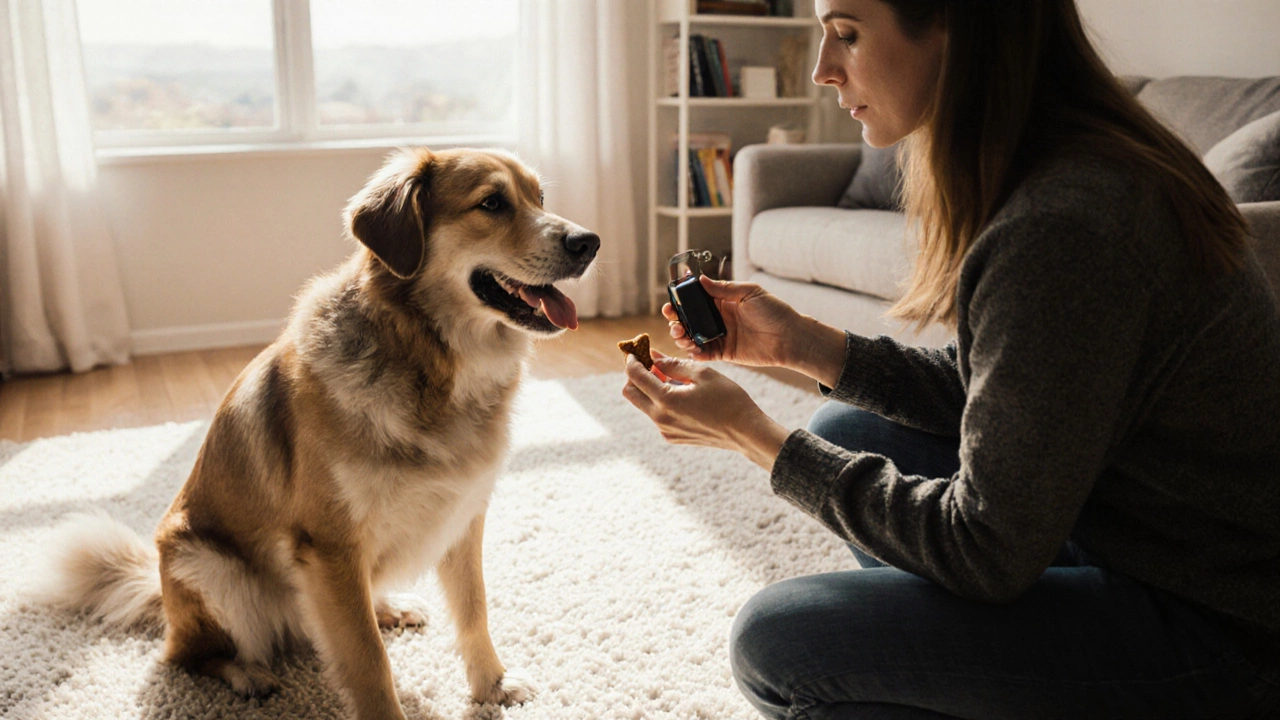DIY Dog Training: Simple Steps for Happy, Well‑Behaved Dogs
When you start DIY dog training the practice of teaching your canine skills and good habits yourself, without hiring a professional trainer. Also known as do‑it‑yourself dog training, it lets you bond with your pet while saving money. DIY dog training works best when you understand the core ideas behind it, because the whole process encompasses clear communication, consistency, and fun.
One of the most effective tools in any home‑training toolbox is positive reinforcement a method that rewards desired behavior with treats, praise, or play. Instead of focusing on what the dog does wrong, you celebrate what it does right, which builds confidence and encourages repeat actions. In practice, this means giving a tasty bite or a happy “good boy!” the moment your pup sits on cue. Positive reinforcement requires timing, consistency, and a clear signal for the reward, and it is the foundation for most modern training plans.
Clicker Training: A Small Device, Big Results
Another popular branch of clicker training using a handheld clicker to mark the exact moment a dog performs the right behavior. The click sound is a crisp, consistent cue that tells the dog, “That’s exactly what I wanted.” Because the click is always the same, the dog learns faster than with a voice cue that can vary. Clicker training requires a clicker, some high‑value treats, and a few short sessions each day. Once the association is solid, you can replace the clicker with a verbal marker if you prefer.
Teaching your puppy its name is a small but powerful first step in any training journey. The post “How to Teach Your Puppy Its Name – Simple Steps for Quick Recall” shows a step‑by‑step method that relies on name recall getting a dog to look at you and come when you say its name. Start by saying the name in a happy tone, then immediately reward when the puppy turns its head. Repeating this in different rooms builds a reliable recall that later helps with off‑lead walks and emergency situations. Name recall influences overall obedience because it creates a line of communication that the dog trusts.
Beyond specific techniques, successful DIY dog training hinges on consistency and environment. Dogs learn through patterns, so practicing the same cue in the same way each day helps cement the behavior. A quiet, distraction‑free space works best for the first few sessions; once the dog gets the idea, you can gradually add mild distractions like another pet or toys. Consistent practice shapes dog behavior, turning a random action into a reliable skill.
The collection of articles below covers the whole training spectrum. You’ll find guides on leaving kibble out safely, feeding schedules, travel tips, and even the debate over prong collars—each piece adds a piece to the training puzzle. Whether you’re a first‑time puppy parent or looking to sharpen an old dog’s manners, the tips here give you practical steps you can start using today.
Ready to roll up your sleeves? Browse the posts for hands‑on advice, quick checklists, and real‑world examples that turn theory into everyday success with your furry friend.
Posted By Bryndle Redding On 23 Oct 2025 Comments (0)
DIY Dog Training: Step‑by‑Step Guide to Train Your Dog at Home
Learn how to train your dog yourself with a step‑by‑step DIY guide, covering tools, positive reinforcement, common challenges, and a handy checklist for lasting results.
READ MORE